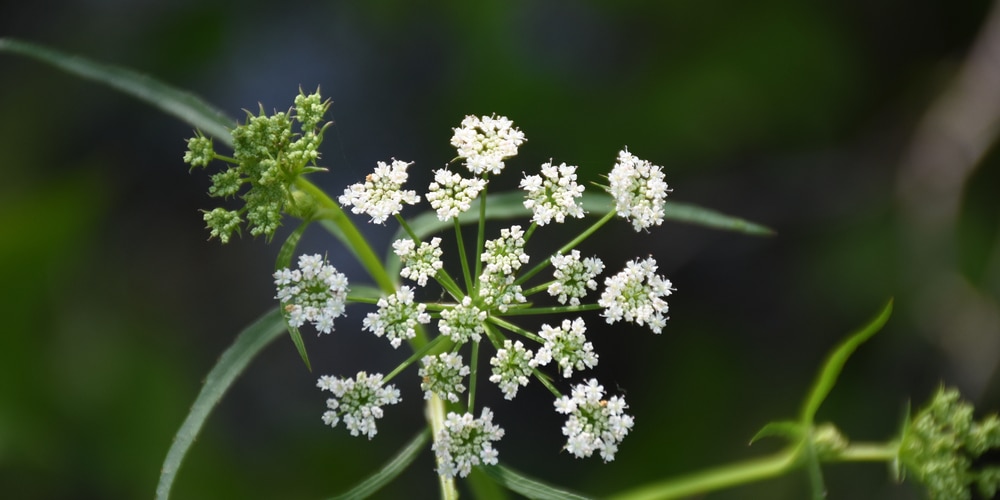Some plants might look stunning but can also contain chemicals poisonous to humans and other animals. Such plants can deter harmful insects and protect themselves from microbial infections. Hemlock is one of those plants. If you didn’t know this already, water hemlock is among the most poisonous plants for men. Indeed, all of its parts are toxic. But does hemlock grow in Florida?

The short answer is yes. This plant is native to Florida and occurs throughout the state.
It produces delicate-looking flowers in the spring and the summer. But don’t get confused by hemlock’s looks: these plants are dangerously toxic to humans. To be on the safe side, you must avoid all aquatic plants with large clusters of white flowers. To learn more about hemlock, where it grows, and how to identify it, keep reading this essential guide.
Characteristics
In Florida, you will find spotted hemlock in swamps, riverbanks, ditches, and other sites where the soil is moist (or even wet). While you won’t find it in a suburban garden (because of its toxicity), you may see it around borders if your landscape includes a damp area. You can even find it around sides or at the edges of cultivated fields, close to the irrigation system. While the entire plant is toxic to humans, you will find most compounds in its roots: ingesting them can be deadly (more on that later).
The plant can grow up to a couple of feet tall in its optimal environment. However, you can also find medium-sized plants floating around vegetation. Hemlock grows large and produces numerous white flowers in the spring and summer. Blooms come in clusters of white and tiny 5-petaled flowers. You can find hundreds of hemlocks around the Wekiva River if you want to see these plants in their natural habitat.
This plant attracts beneficial pollinators such as bees, wasps, and butterflies during the blooming season. Part of the Cicuta genus, the plant contains cicutoxin, a poisonous compound that acts rapidly on the central nervous system.
Many children died munching on them, thinking hemlock was a wild carrot due to the plant’s clusters of white tuberous roots. Consuming the toxic compounds in this plant can cause convulsions and death by cardiac failure in as little as thirty minutes to two hours. The plant is always poisonous, but its toxicity increases during the spring. While most disasters result from ingestions, some of the compounds that this tree presents can stick to your skin and poison you. Even touching the plant may cause a skin reaction in sensitive people. So, be careful when you are around hemlocks!
How to Identify Hemlock
Many plants might look similar to the poisonous hemlock. Wild carrots, anise, fennel, and coltsfoot have characteristics that resemble toxic and dangerous plants. However, contrary to other harmless species, hemlock is hairless. It doesn’t display hairs nor in the stem or the leaf surfaces.
There are two types of highly poisonous hemlock plants: the poison hemlock is a non-native that can grow up to eight feet in height, while the spotted water hemlock is a native that won’t go above four feet. Both species have musky odors and thrive in moist and wet environments.
Hemlock is also similar to elderberry. It is not uncommon to spot both plants next to each other. However, elderberry is safe and produces edible flowers and fruits. To avoid making a terrible mistake, ensure you know which species you have in front before picking berries. Do not assume that because you see a bird or another animal consuming the plant, you can eat it too! Most of the time, it is better to be safe than sorry! Hemlocks’ harmless looks can fool even experienced foragers.
Does Hemlock Grow in Florida?: The Bottom Line
Despite its attractive looks, hemlock is deadly. Does Hemlock Grow in Florida?Yes, you can find it all over Florida. Make sure you know how to identify it to stay away from it! If the name “hemlock” doesn’t sound familiar, it is because you know it differently.
For instance, water hemlock, poison parsnip, suicide root, spotted parsley, and cowbane is other ways people commonly refer to the plant. Regardless of what you call it, hemlock is a dangerous and highly toxic plant. However, some gardeners grow it to attract beneficial pollinators to their gardens: not all bad things harm you!
